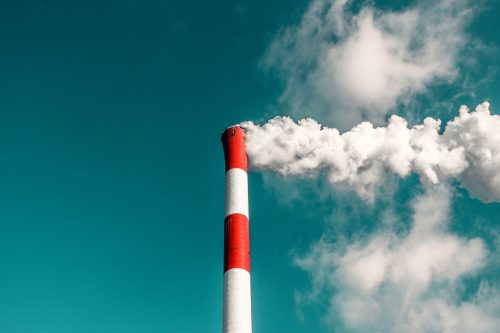From Trash to Treasure: A brief summary of the valuable carbon materials that can be formed using CO2
Fields covered: Chemical Engineering, Carbon Materials, Carbon Capture
Related Articles:
§ ![]() Review of Recent Technologies for Transforming Carbon Dioxide to Carbon Materials |Lead Halide Perovskites: Rainbow in a Bottle
Review of Recent Technologies for Transforming Carbon Dioxide to Carbon Materials |Lead Halide Perovskites: Rainbow in a Bottle
The looming threat of uncontrolled global warming has been around for a few decades now, spurring scientists and activists alike into action. While many have been trying to innovate better ways to capture the major greenhouse gas CO2, one group of scientists have been busy answering the following question: how do we get global economies on board with CO2 capture and storage? Their answer is to make CO2 valuable, by innovating methods to turn unwanted CO2 into expensive carbon products.

Because CO2 is very chemically stable, turning CO2 into other materials has always been an uphill task. To overcome this challenge, the scientists studying CO2 reactions have traditionally used extreme temperatures and pressures. Combusting solid CO2 with other metals can produce high yields of nano-caged or porous carbon materials amongst other things. Another possible method is to use supercritical CO2 formed at high temperatures and pressures. Supercritical CO2 can be reacted with metals to form diamond crystals, carbon nanotubes, Nitrogen-doped graphene, and many more.
If use of gaseous CO2 is desired, there are methods available as well. A popular method is molten salt electrolysis, where metal carbonates act as the electrolyte, and an electrical current is passed through the system to induce chemical reaction of the carbonate anion CO32- into valuable carbon materials. Side products of this reaction will then react with CO2 in the air to regenerate the carbonate anion, thus performing a net conversion of CO2 into carbon materials such as carbon nanospheres and carbon nano-onions. By adjusting reaction conditions like the electrical current, scientists can better control the resulting carbon material formed.
Unfortunately, the previous two methods are highly energy consuming, which prompted research into CO2 reaction at milder temperature and conditions, using highly reactive reagents like magnesium and ammonia borane. Reactions using these materials can effectively produce carbon materials such as boron- and/or nitrogen-doped carbon nanostructures at air pressures close to or at atmospheric pressure, but still require high temperatures of 500oC or more.
But, you may ask, what are all these materials good for? Their most common applications lie in supercapacitators, high functioning lithium batteries, and as catalysts for electrochemical reactions. However, all these methods produce more CO2 in terms of equivalent energy usage than they take in. Hopefully, with further research and optimisation, carbon capture technology may one day help turn the greenhouse gasses choking our atmosphere into the technological infrastructure we live with.




